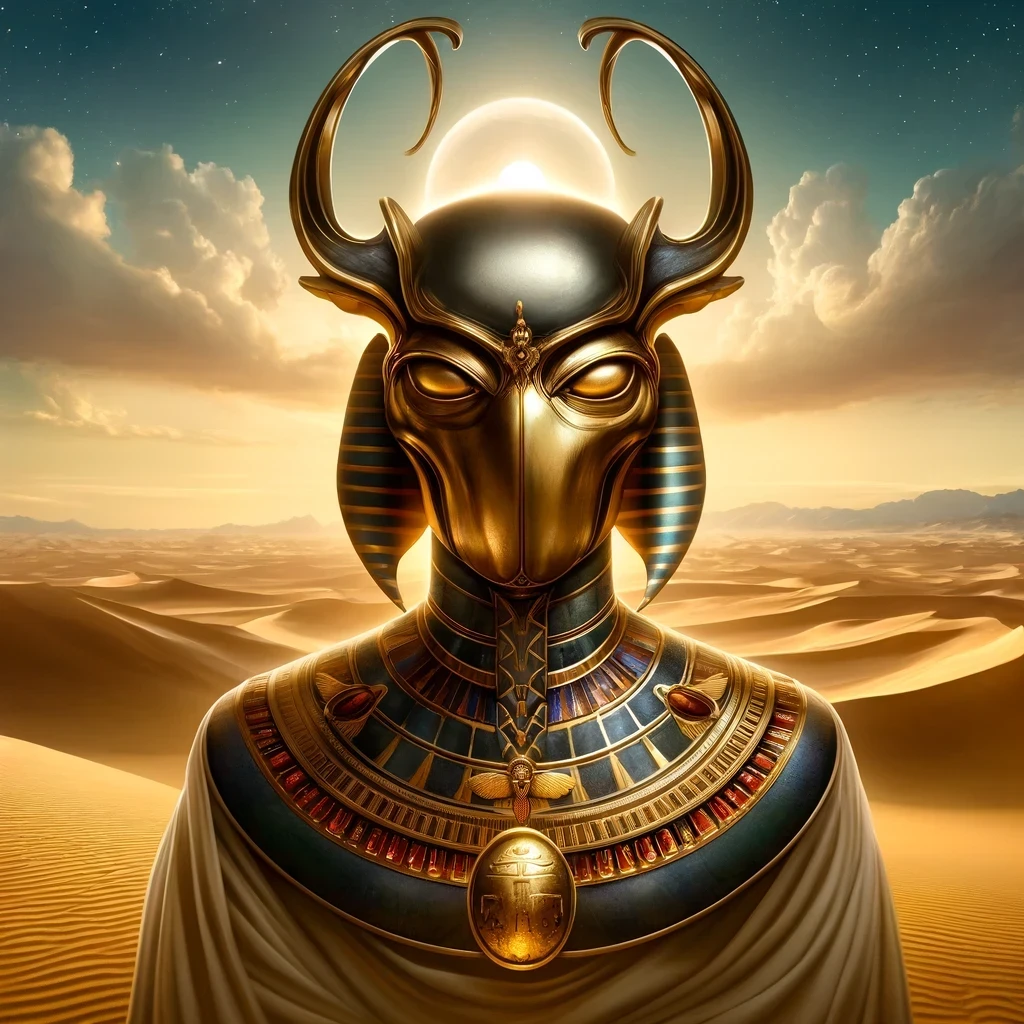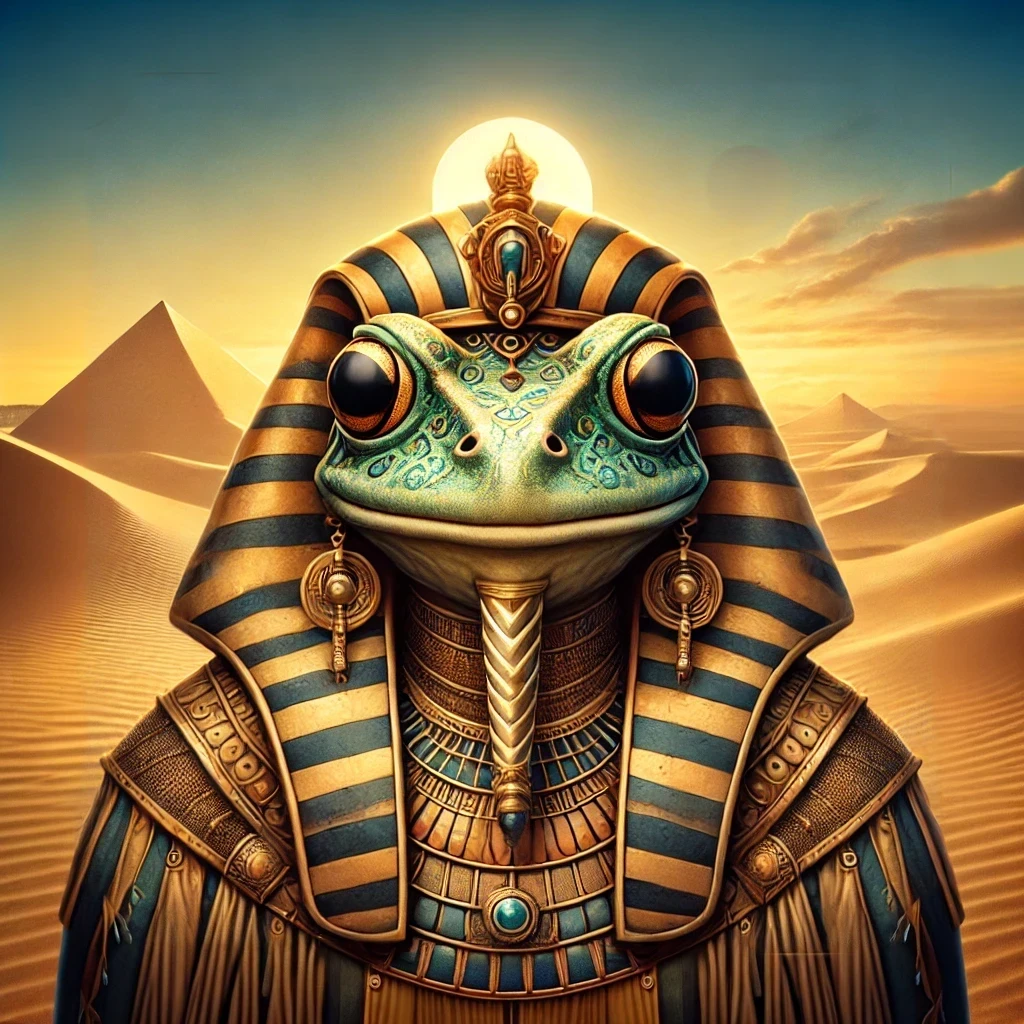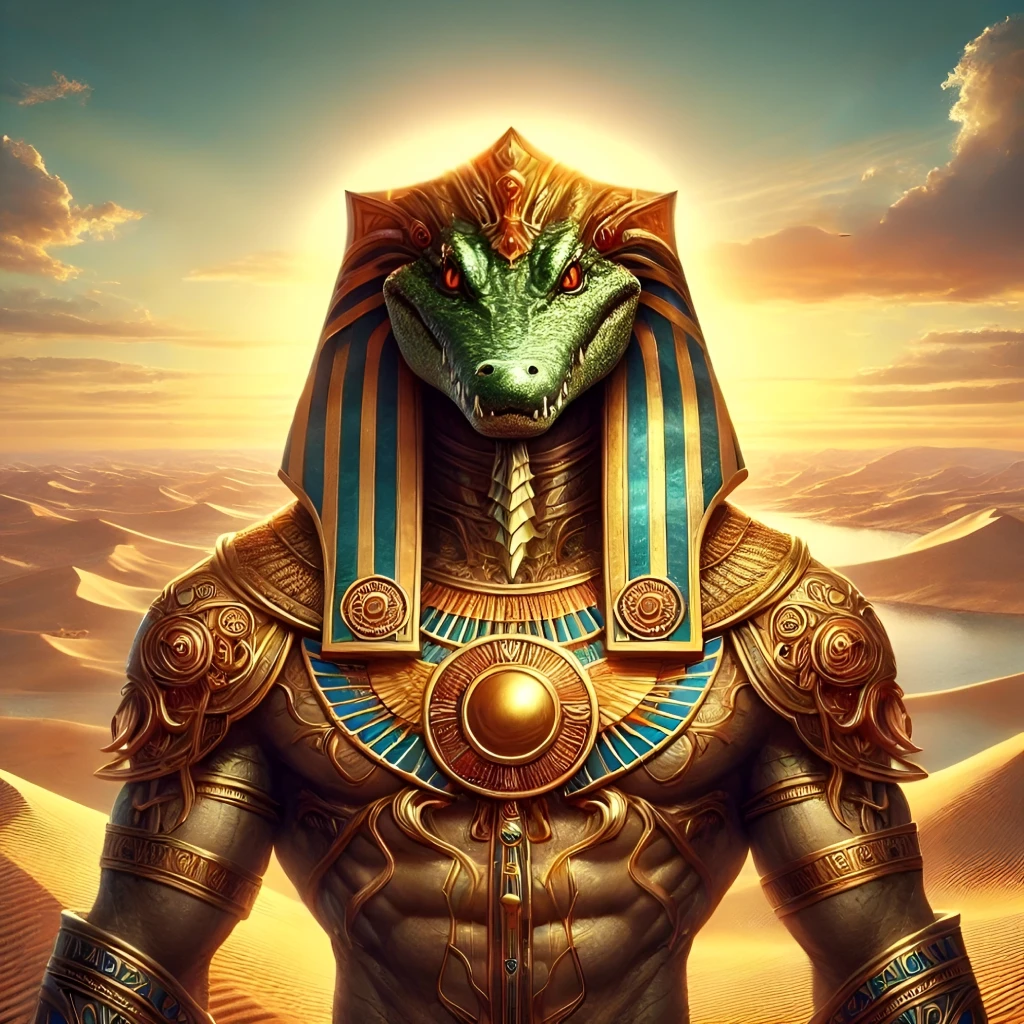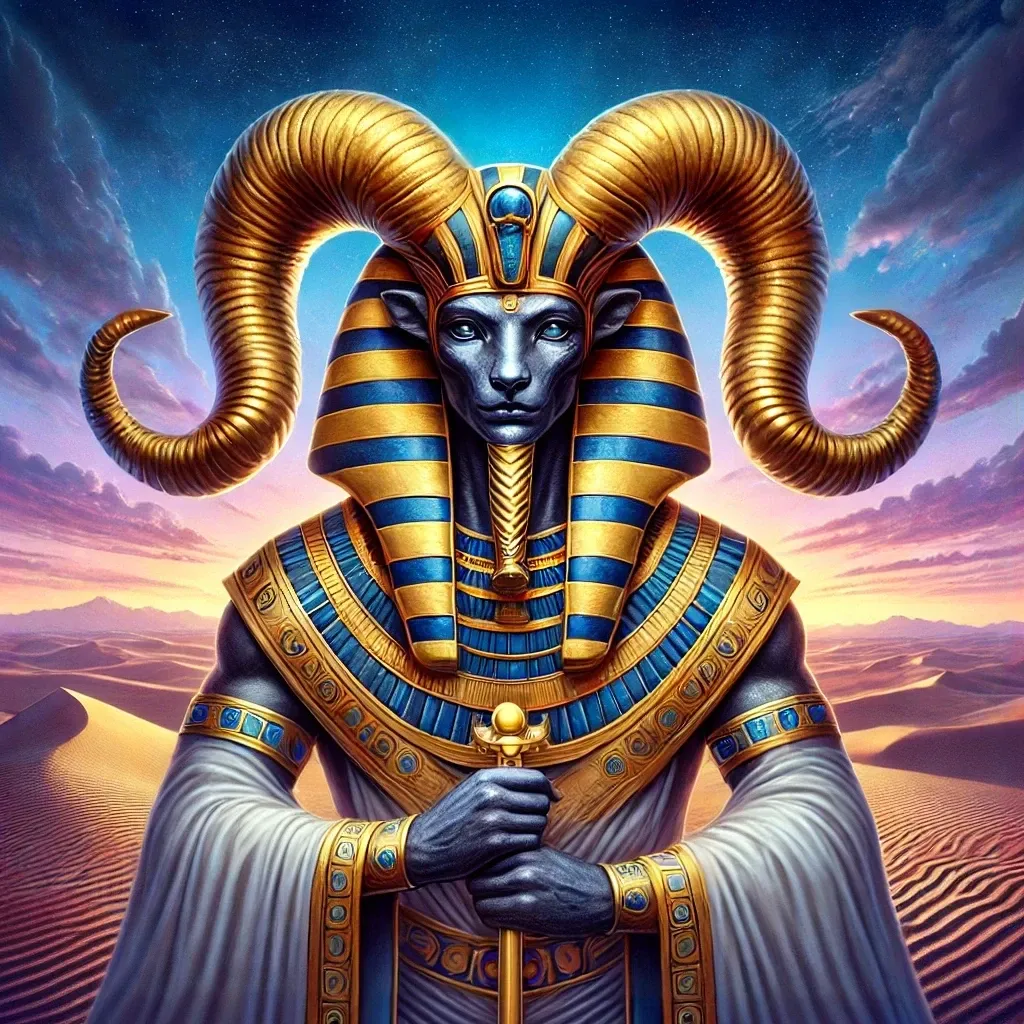Khepri, also known as Khepera or Kheprer, is one of the most intriguing figures in Egyptian mythology. Associated with the rising sun, renewal, and transformation, this god was often depicted as a scarab beetle or a man with a scarab for a head. The name “Khepri” derives from the Egyptian verb kheper, meaning “to become” or “to come into being,” reflecting the deity’s close ties to creation and perpetual rebirth.
Origins
Historical Roots
Khepri’s origins can be traced back to ancient Egyptian cosmology, where he was revered as a solar deity tied to the dawn. Unlike Ra, who symbolized the midday sun, this god embodied the sun’s emergence at dawn. The scarab beetle—an insect that rolls dung into a ball and lays its eggs inside—served as the primary symbol for the deity. This natural behavior was seen as a metaphor for the sun’s journey across the sky and the cyclical nature of life and death.
Connection to Creation
In Egyptian creation myths, Khepri played a pivotal role in the daily renewal of the cosmos. He was believed to roll the sun across the horizon, much like the beetle rolls its ball. This act of rolling symbolized the idea of constant regeneration, a cornerstone of Egyptian religious thought..
Appearance
Iconography
The deity’s most common depiction is as a scarab beetle, either on its own or incorporated into larger art pieces. These representations appear frequently in amulets, wall carvings, and funerary objects.
Hybrid Forms
In some depictions, Khepri appears as a man with the head of a scarab beetle. This hybrid form emphasizes his divine nature and connects his earthly symbolism with his celestial role. Rare artistic interpretations even show him pushing a solar disk, reinforcing his association with the sun’s movement.
Abilities
Creation and Renewal
As a deity of transformation, Khepri’s primary power lies in creation. He was believed to renew the world daily, pushing the sun across the horizon and breathing life into the cosmos. This regenerative role positioned him as a vital force in maintaining cosmic order.
Protection in the Afterlife
Beyond earthly renewal, Khepri’s influence extended to the afterlife. Amulets bearing his likeness were placed on mummies to ensure their rebirth in the next world. His association with the sun’s cyclical journey mirrored the deceased’s transition to eternal life.
Myths
The Solar Journey
One of the most prominent tales involving Khepri focuses on his role in the sun’s daily cycle. Ancient Egyptians believed he rolled the sun across the sky during the day and transported it through the underworld at night. This perpetual labor symbolized the struggle and triumph of life over darkness.
Creation Myths
In some cosmogonies, the Scarab God is credited with self-creation. Emerging from the primordial chaos, he brought order to the universe. This act of self-generation emphasized his independence and divine power.
Symbolism
The Cycle of Life
Khepri embodies the eternal cycle of life, death, and rebirth. His daily renewal of the sun serves as a metaphor for personal transformation and spiritual growth.
Scarab Amulets
Scarabs were among the most common symbols of Khepri. Worn as jewelry or placed in tombs, these amulets signified protection, regeneration, and good fortune.
Associated Objects, Animals, and Plants
- Objects: The solar barque, representing the sun’s journey.
- Animals: The scarab beetle, sacred for its life-renewing habits.
- Plants: The lotus flower, a symbol of creation and purity.
Relationships
Connection to Ra
As a solar deity, Khepri is closely linked to Ra. Some traditions view him as an aspect of Ra, embodying the dawn, while Ra represents the midday sun.
Links to Other Deities
Khepri’s transformative role also connects him to Osiris, the god of the afterlife. While Osiris governs rebirth in the underworld, the Scarab God oversees the renewal of life on earth.
Trivia
- Khepri’s imagery appears in the tombs of pharaohs like Tutankhamun, highlighting his importance in royal mortuary practices.
- Scarab amulets were not only used for the dead but also as seals, denoting authority and protection.
- Despite his significance, Khepri had few dedicated temples; his worship was often integrated into Ra’s cult.
- The scarab’s life cycle—emerging from the ground—paralleled resurrection myths.
- Khepri’s role in Egyptian cosmology influenced later Greco-Roman interpretations of solar deities.



